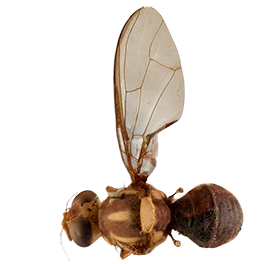Diagnosis
Morphological – adult
Medium sized species. Features include;
- small fuscous facial spots present
- postpronotal lobes and notopleura yellow
- scutum red-brown with irregularly shaped fuscous markings, mesopleural stripe reaching midway between anterior margin of notopleuron and anterior npl. seta, lateral postsutural vittae beginning anterior to mesonotal suture, medial postsutural vitta present, scutellum yellow; wing with a narrow fuscous costal band and anal streak, cells bc and c pale fulvous with microtrichia in outer ½ of cell c only
- abdominal terga III-V orange-brown occasionally with fuscous on lateral margins of tergum III and generally with narrow medial fuscous band on tergum V
- posterior lobe of male surstylus long
- female with aculeus tip blunt trilobed (Drew 1989; pers. comm. Drew 2010).
Morphological – larvae
Not available.
Molecular
DNA barcoding
BOLD reference data not available.
PCR-RFLP Test 1
BsrI: Data not available
HinfI: Data not available
HhaI: Data not available
Sau3AI: Data not available
SnaBI: Data not available
SspI: Data not available
Vspl: Data not available
PCR-RFLP Test 2
Data not available.
Gallery
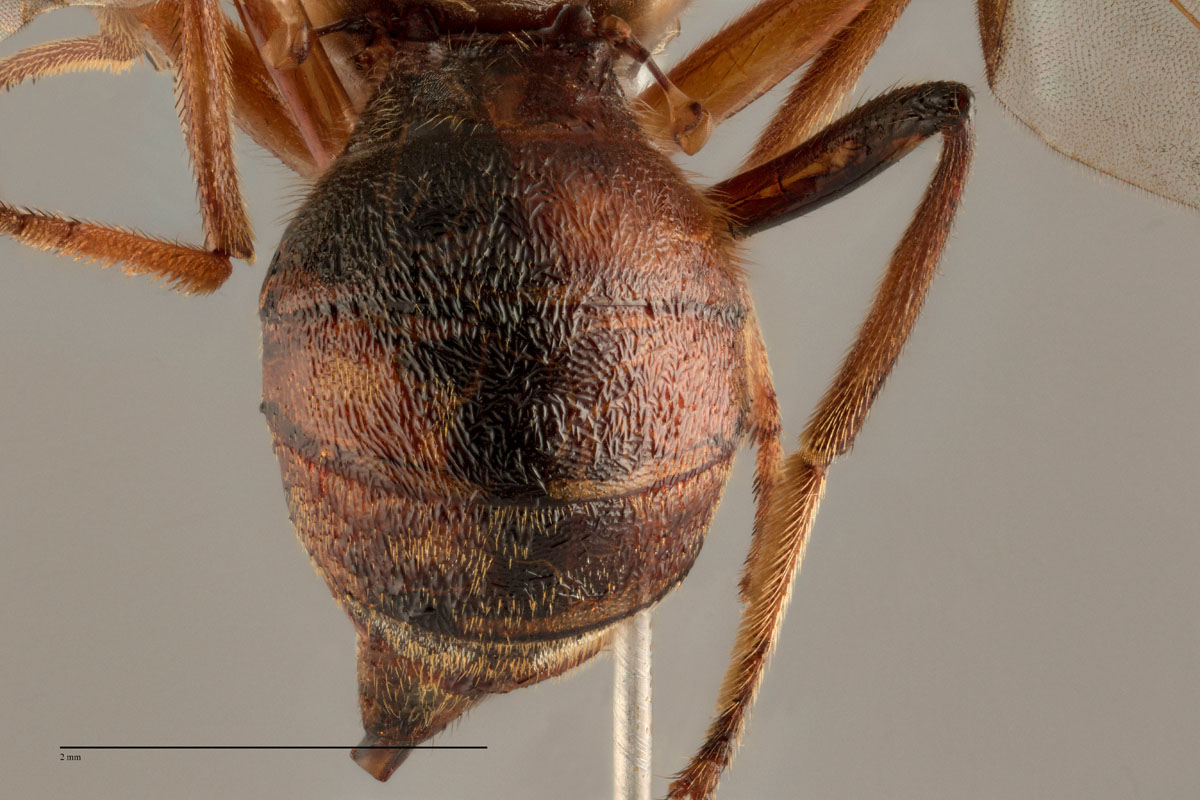 link
linkZeugodacus atrisetosus - Abdomen Dorsal Classic ZAT001
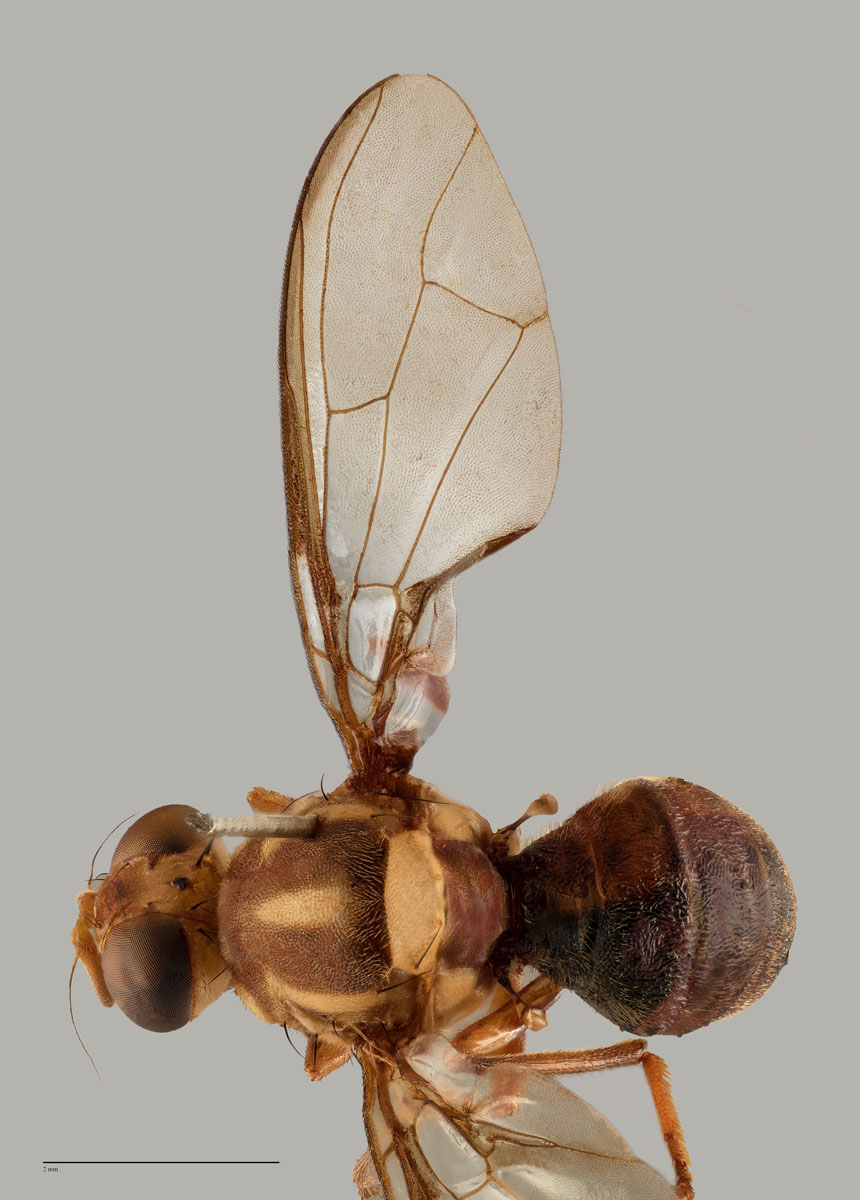 link
linkZeugodacus atrisetosus - Entire Body Dorsal with Wing Classic ZAT001
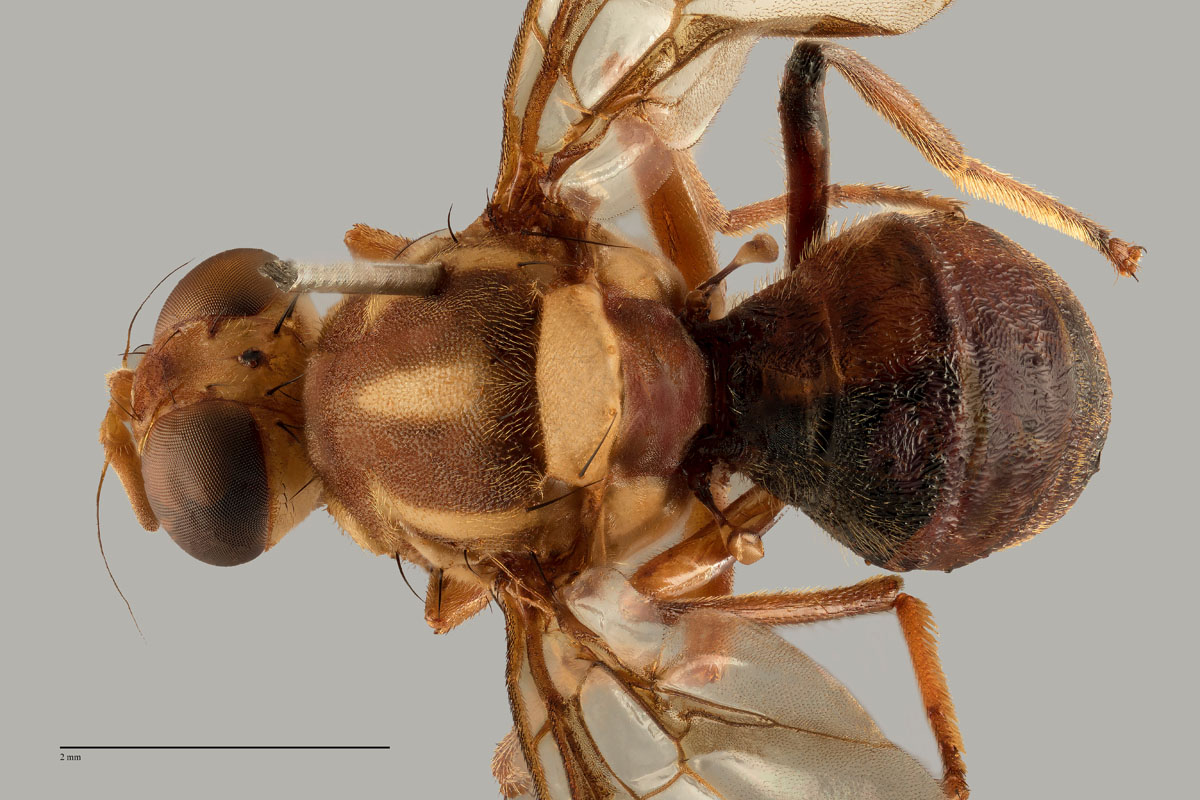 link
linkZeugodacus atrisetosus - Entire Body Dorsal Classic ZAT001
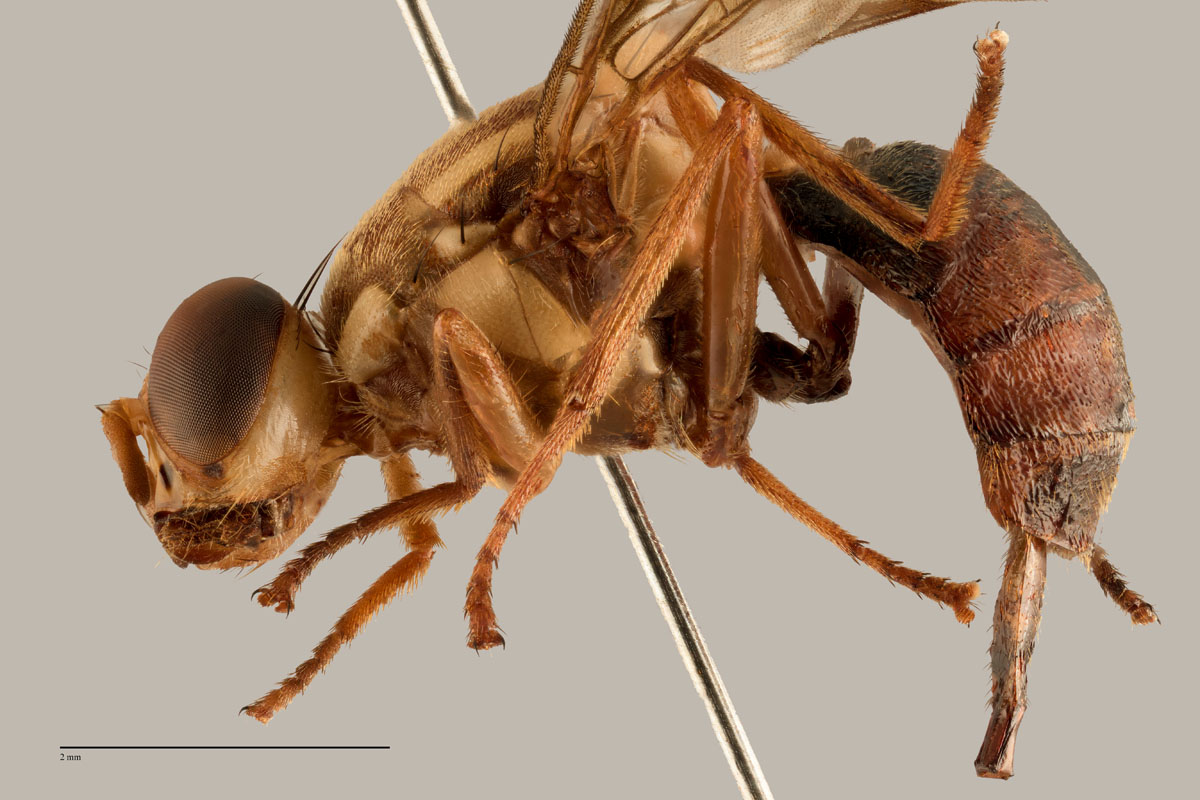 link
linkZeugodacus atrisetosus - Entire Body Lateral Classic ZAT001
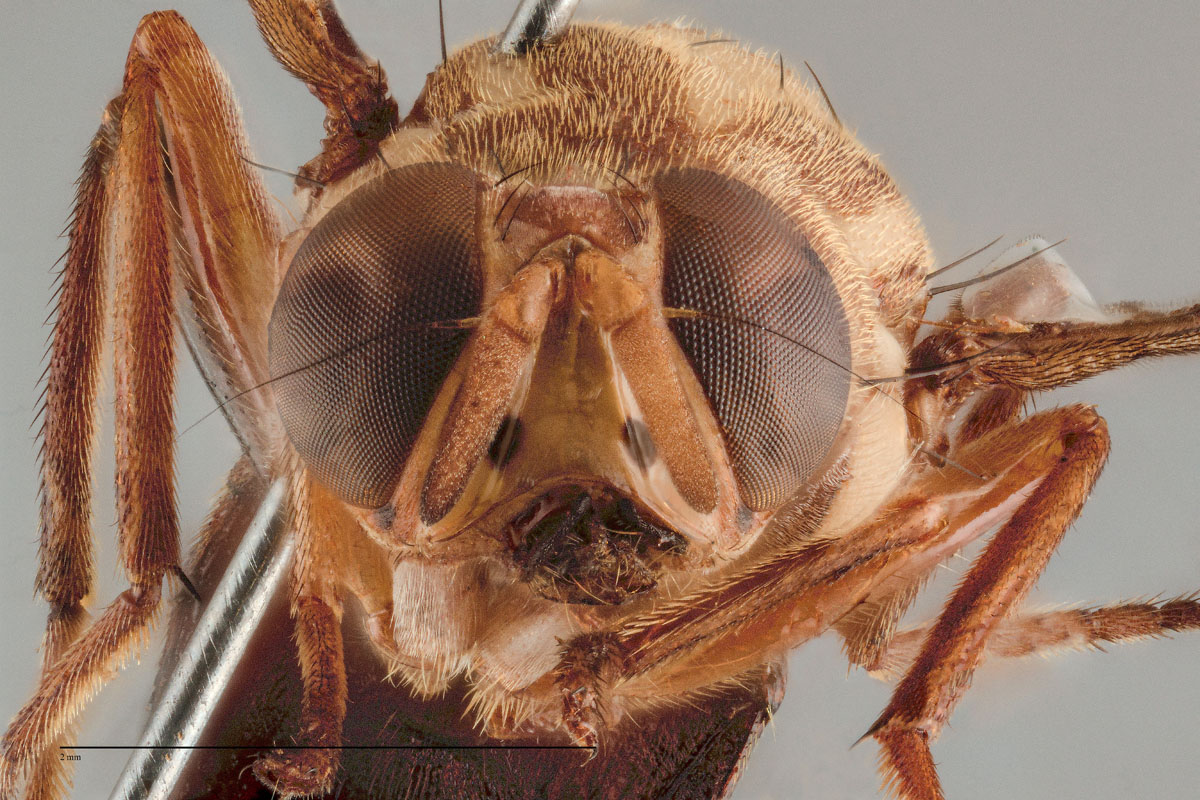 link
linkZeugodacus atrisetosus - Head Shot Classic ZAT001
Host Range
This species has been reared from eight host species in seven genera and three families, and is mainly associated with cucurbits: watermelons, honeydew and rock melons, cucumbers, pumpkins, zucchini, luffa and tomatoes (Leblanc et al. 2012).
Major commercial hosts:
- Citrullus lanatus (watermelon)
- Cucurbita pepo (ornamental gourd)
- Cucumis sativus (cucumber)
- Lycopersicon esculentum (tomato)
Distribution
Known only from mainland Papua New Guinea (Leblanc et al. 2001)
Papua New Guinea: Central Province, Mainland, Oro, Morobe Province, Eastern Highlands (Leblanc et al. 2001)
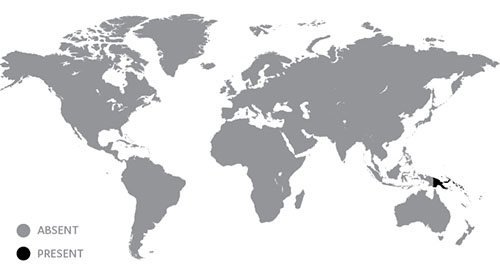
Similar species
Zeugodacus atrisetosus is very similar in appearance to the endemic Z. cucumis but differs in having prescutellar and supra-alar setae present. In common with Z. cucumis it also lacks pecten.
Pest Status
- Exotic
- Medium level pest species
Attractant/Lure
No known record. Protein or orange ammonia traps are the only alternative to fruit rearing.
